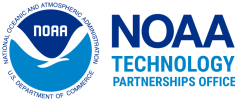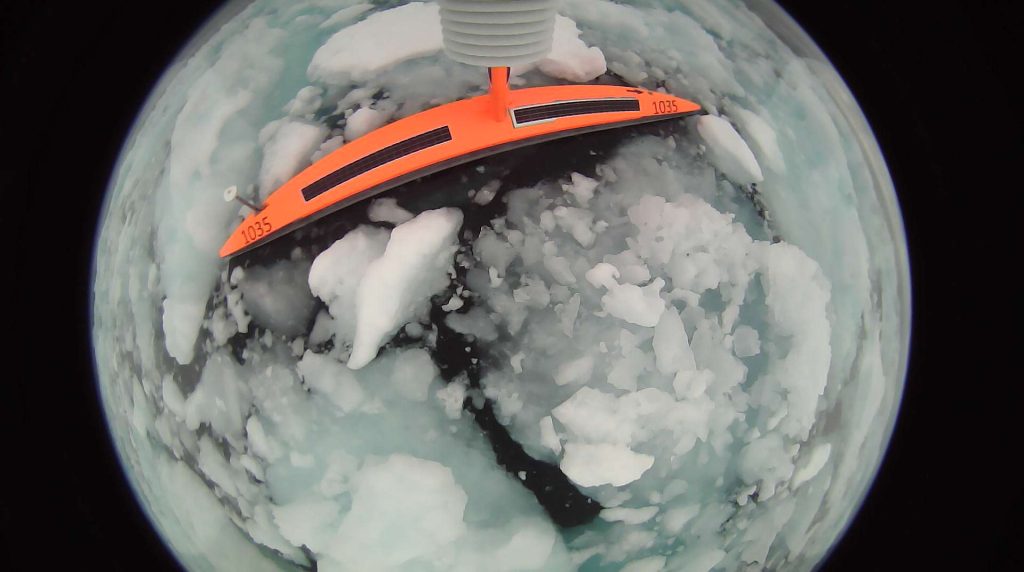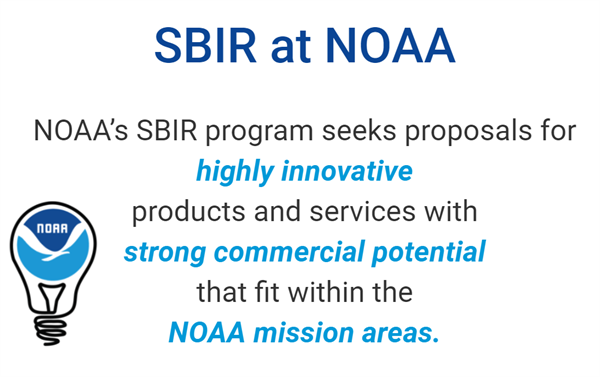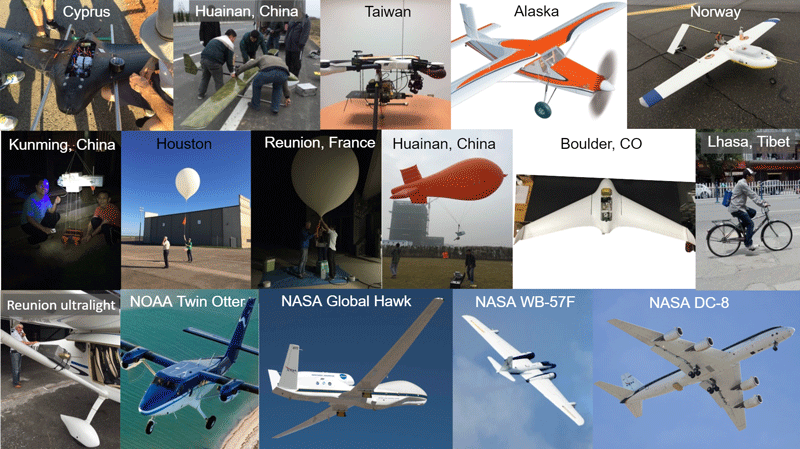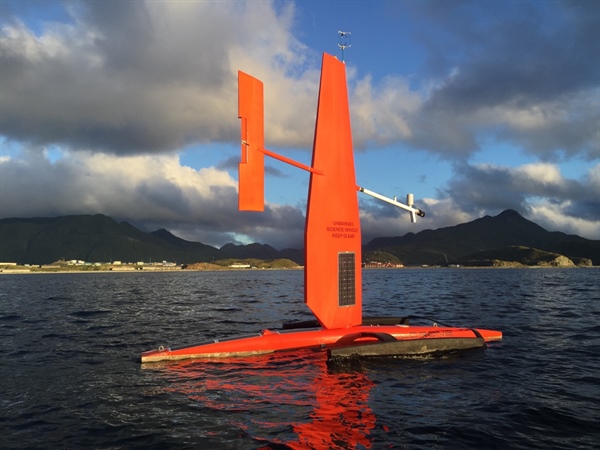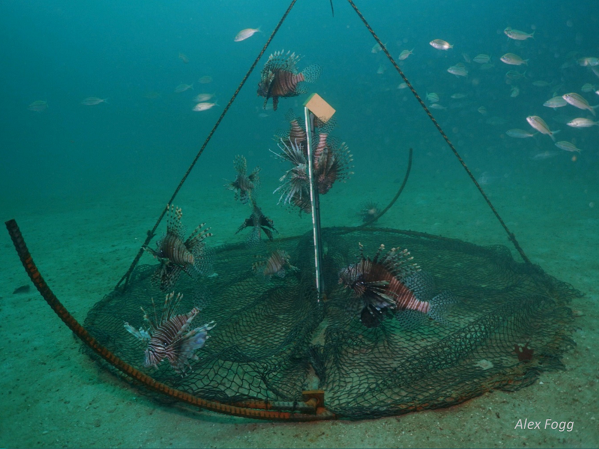POPS is a low-cost, high-sensitivity alternative to traditional aerosol measurement technologies. For many people, hiking is a peaceful escape from everyday stressors. For Dr. Ping Chen, CEO of Handix Scientific Inc., hiking was a starting point of his success. In 2015, he met NOAA inventor and research physicist, Dr. Ru-Shan Gao, on a trail in Boulder, Colorado. As they walked, Gao proudly spoke about NOAA’s recently-developed Portable Optical Particle Spectrometer (POPS) for aerosol measurement. Chen immediately realized the technology’s tremendous potential and expressed interest in licensing and commercializing the technology with a firm belief that POPS was going to be a commercial success. Indeed, with over 200 units of POPS sold across the world to date, it appears that Chen’s premonition became a reality. His new company has since grown from one to twelve full-time employees and Chen expects the demand for POPS to increase in the near future as his team actively explores new markets. Close-up image of POPS components. (Photo by Derek Parks, NOAA) Challenge – Why is aerosol measurement important? Atmospheric aerosols are microscopic solid or liquid particles that are suspended in the air, such as dust, mists, or smoke. These particles, while tiny, have major impacts on the environment, especially on weather, climate, and air quality. For example, aerosols can either scatter or absorb sunlight to produce a cooling or warming effect on the planet’s climate. Aerosols can also affect cloud formation, which is important for regulating Earth’s energy balance and the hydrological cycle. Furthermore, aerosols serve as active sites for surface chemical reactions that create ozone, which poses a threat to public health. An accurate assessment of aerosol concentration and size distribution in the atmosphere is fundamental for understanding the environmental impacts of aerosols; however, most atmospheric measurements are conducted in situations where using traditional, bulky spectrometers is quite a challenge, such as on airplanes, balloons, and small drones. The need for miniaturized spectrometer technology was very clear, and POPS seemed to be the answer. Indeed, Dr. Ru-Shan Gao, a research physicist at NOAA’s Chemical Sciences Laboratory (CSL), was working on a very long NASA Global Hawk flight when the POPS idea first came to his mind. During the flight, scientists controlled the unmanned aircraft on its mission to collect high-altitude, long-duration atmospheric data. “We were sitting at the hangar watching atmospheric data coming in for 24-hour flights, and we started wondering what we could do to make the Global Hawk more powerful. That was the starting point for our POPS research,” explained Gao. The map shows the monthly average aerosol concentration around the globe. (Image by NOAA NESDIS) Innovative Solution – Miniaturized research-grade aerosol spectrometers POPS is a compact, low-cost, high-sensitivity sensor that enables robust and reliable atmospheric measurements for air quality monitoring. POPS uses a laser to measure and count aerosol particles with diameters ranging from 140 nanometers to 2.5 micrometers. In contrast to conventional particle spectrometers, POPS is particularly suitable for use in drone and balloon missions at a wide range of altitudes from the Earth’s surface to the stratosphere. Gao’s colleagues consider him to be a master craftsman who is able to create clever one-of-a-kind scientific devices for field measurement. Gao explained that “The driving force behind the POPS invention was to develop an aerosol instrument that was small, light, and relatively inexpensive, yet sensitive and robust enough for science-quality atmospheric measurements.” He recognized that the biggest challenge would be to make the technology “miniaturized and cheap enough to become an alternative to already existing spectrometers.” 3D-printing was the ideal solution. The technology enabled Gao to shrink POPS to the size and weight of a lunch-box, simplify the manufacturing process, and cut materials costs down to $2,500. As a result, POPS are one tenth the size and one fifth the cost of traditional comparable instruments. First, second, and third generation prototypes (left to right) were developed in 2012 and 2013. The result of the 2013 NOAA OAR Special Early-Stage Experimental or Development (SEED) grant is pictured furthest right. (Photo by Ru-Shan Gao, NOAA) The Role of Technology Transfer – Handix Scientific thrives on POPS commercialization Technology partnerships allow private companies to grow and spearhead research and innovation, while also ensuring that technology developed using federal funding fulfills public and private needs. These partnerships are a win-win for both parties involved: private companies commercialize and manufacture new products, while federal labs use the resulting products to support their missions. When the news of POPS spread, Gao was contacted by a number of companies and individuals who were eager to commercialize the invention. Although Gao’s team was convinced of POPS’s commercialization potential from the very beginning, they faced a challenge. He explained, “As scientists and engineers, we had neither the ability nor the knowledge required to deal with the legal details, so we decided to reach out to Derek Parks, deputy director of NOAA’s Technology Partnerships Office.” The team brought the invention to the Technology Partnerships Office in March 2015 and made POPS immediately available for licensing. When Dr. Ping Chen heard about this innovative technology, he realized its tremendous potential and decided to license and commercialize the technology. Chen credited POPS with “Opening the door to new measurement platforms, such as drones and radiosonde balloons, that were not accessible before.” By July 2015, NOAA had negotiated the POPS license agreement with Handix Scientific. “Thanks to the Technology Partnerships Office, the entire technology transfer was rapid and painless,” declared Gao. Chen shared that to this day, his company keeps in constant communication with Gao’s research group for further opportunities, and encouraged other companies to engage with NOAA’s Technology Transfer Program. A small company Handix Scientific improved and commercialized POPS. (Photo by Handix Scientific) Defining Success – Economic impacts on Handix Scientific The economic impact to Handix Scientific has been significant. Earnings from POPS commercialization were reinvested in the company, which enabled Handix Scientific to grow from two people in 2015 to 12 full-time employees in 2021. “Currently, Handix Scientific is a very vibrant research and development company with seven Ph.D. graduates employed and close to 10 SBIR grants. We are developing several new products with federal funding support,” explained Chen. Handix Scientific has sold over 200 POPS units around the world, to date, with customers in China, France, Germany, Japan, Korea, United Kingdom, and the United States. Most of the demand for POPS comes from the research field, with scientists as the end users. The NOAA Chemical Sciences Laboratory is, in fact, the company’s biggest customer with 54 POPS units ordered so far and 28 more expected. Gao explained that this is the ultimate sign of success for a technology transfer. NOAA Labs and scientists are adept at developing new technologies, but they are not equipped to mass produce them. Transferring the technology to a private company frees up the scientists to work on the science and enables a private company to refine and mass produce the NOAA design. The company makes money and NOAA is able to procure a complete device at a lower per unit cost. Furthermore, the company expects POPS demand to increase as they are actively exploring how to break into new markets related to ambient and indoor air quality monitoring. To learn more about POPS, please view Dr. Gao’s presentation for the NOAA Innovators Series and explore related scientific publications and NOAA CSL field projects here. Note: Any reference obtained from this website to a specific company, product, process, or service does not constitute or imply an endorsement by NOAA. Published on August 24, 2021 by Miguel Aristu Media contact: suzi.webster@noaa.gov
